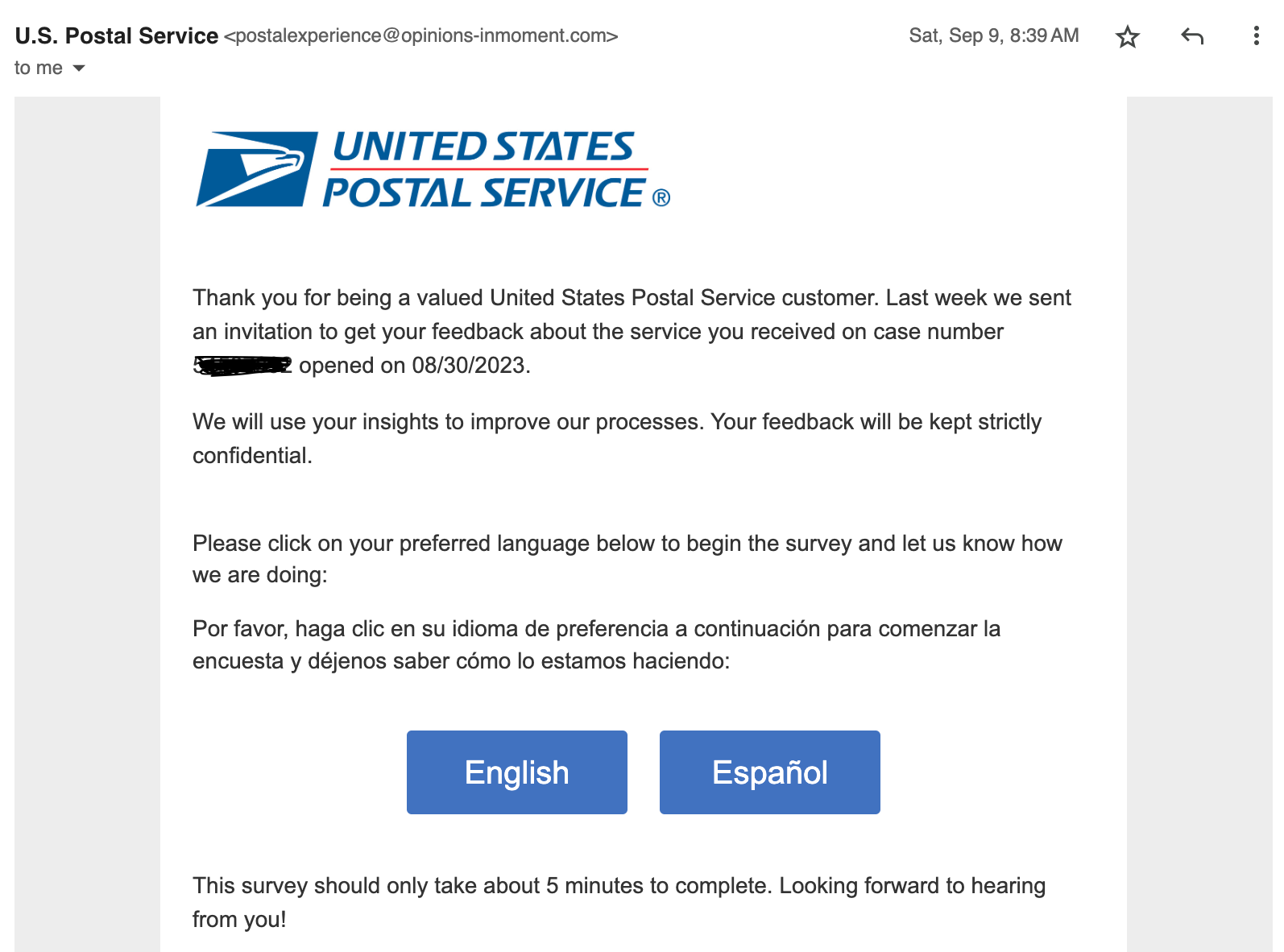Customer and lead feedback provides valuable insights that can drive product improvements, refine marketing strategies, and enhance overall customer satisfaction.
However, to eventually make money through this feedback from leads and customers, it's essential to first strategically place surveys where your target audience will notice and engage with them. In this guide, we will explore the most effective locations for placing surveys to gather the best feedback.
Table of Contents

The Importance of Customer and Lead Feedback
Before delving into survey placement strategies, let's briefly emphasize the significance of customer and lead feedback:
Product and Service Improvement: Feedback from customers and leads can unveil pain points, issues, and areas for improvement. By addressing these concerns, businesses can enhance their offerings and stay competitive.
Enhanced Customer Experience: Gathering feedback allows businesses to tailor their services to customer preferences, resulting in improved satisfaction and loyalty.
Informed Marketing Strategies: Lead feedback provides insights into the effectiveness of marketing campaigns and helps businesses fine-tune their messaging and targeting.
Data-Driven Decision-Making: Customer and lead feedback is a valuable source of data that can guide strategic decisions across various departments within an organization.
Now, let's explore the best locations to place surveys and collect this invaluable feedback.
Where to Place Your Surveys
Every business is different in how they gather the best customer or site visitor feedback. One size doesn't fit all in this situation. Even within different industries, such as beauty e-commerce stores and home improvement stores, one survey on social media may get fewer or more engagement than one on a website. Let’s dive into the different options (with some examples!) of where you can put your survey to get viable feedback.
Website Pop-ups and Overlays
Website pop-ups and overlays are effective survey placement options because they capture visitors' attention while they are actively engaging with your content. Here's how to make the most of this strategy:
Exit-Intent Pop-ups: Trigger surveys as visitors attempt to leave your site. These surveys can ask about their reasons for leaving and suggestions for improvement.
Timed Pop-ups: Set timed pop-ups to appear after visitors have spent a certain amount of time on your site, indicating their interest in your content.
Scroll-Triggered Overlays: Display surveys when visitors scroll down a certain percentage of a webpage. This approach ensures that users have engaged with your content before seeing the survey.
Post-Purchase Surveys
For businesses with an e-commerce component, post-purchase surveys can provide valuable insights into customer satisfaction, product quality, and the overall shopping experience. Consider placing surveys in the following locations:
Order Confirmation Page: Display a brief survey immediately after customers complete a purchase to gather feedback on the buying process.
Order Confirmation Email: Include a survey link in the order confirmation email, giving customers the opportunity to provide feedback at their convenience.
Email Surveys
Email surveys are an effective way to gather feedback from both customers and leads. Here are some key locations for sending email surveys:
Onboarding Emails: For leads or new customers, include a survey in onboarding emails to gauge initial impressions and expectations.
Transactional Emails: Incorporate surveys into transactional emails, such as shipping notifications or appointment confirmations, to gather feedback on specific interactions.
Follow-up Emails: After a customer support interaction or purchase, send a follow-up email containing a survey to evaluate the customer's experience.
The below example shows an email from USPS regarding a customer service interaction. It's extremely common for service businesses to send follow-up emails to gain feedback from customers.

Social Media Platforms
Leverage your social media presence to reach a broader audience and gather feedback from engaged followers. Consider the following social media survey placement strategies:
Facebook Polls: Use Facebook's built-in polling feature to pose questions and gather quick feedback from your followers.
Twitter Surveys: Create Twitter polls to collect opinions and preferences related to your products, services, or industry trends.
Instagram Stories: Use Instagram Stories' interactive features, like polls and questions, to engage your audience and gather feedback on a more casual basis.
Customer Portals and Apps
If your business provides a customer portal or mobile app, these platforms can serve as ideal survey placement locations:
In-App Surveys: Integrate surveys within your mobile app, allowing users to provide feedback while using your services.
Customer Portal Surveys: Within your customer portal, offer surveys to gauge user satisfaction with the portal's functionality and usefulness.
Live Chat and Chatbots
Live chat and chatbots offer real-time opportunities to engage with customers and leads. Consider these strategies:
Chatbot-Initiated Surveys: Use chatbots to initiate surveys during conversations with website visitors or app users, gathering feedback while the interaction is fresh.
Live Chat Surveys: Include a survey option within live chat conversations to encourage users to provide feedback on their support experience.
Post-Event Surveys
For businesses that host events, whether physical or virtual, post-event surveys can be invaluable. Place surveys in the following locations:
Event Registration Confirmation Page: After individuals register for an event, direct them to a confirmation page with a survey to gauge their expectations.
Post-Event Emails: Follow up with attendees or registrants with an email containing a survey to evaluate their overall event experience.
Customer Support Interactions
Gather feedback during or after customer support interactions to continually improve your service quality:
Live Chat Surveys: Prompt users to provide feedback immediately after a live chat session, allowing them to rate the support they received.
Ticket Closure Emails: Send a survey in the email confirming the closure of a support ticket, inviting customers to share their thoughts on the resolution process.
Website Feedback Buttons
Integrate website feedback buttons or tabs that users can click to access surveys or provide feedback on specific website elements:
Feedback Tab: Position a tab on the side or bottom of your website pages, which expands into a survey or feedback form when clicked.
Floating Feedback Button: A floating button that remains visible as users scroll can encourage spontaneous feedback.
Mobile App Feedback Prompts
For businesses with mobile apps, incorporate feedback prompts within the app's interface:
In-App Feedback Button: Include a prominently placed feedback button or option within the app, allowing users to share their thoughts or report issues easily.
App Rating Prompts: Prompt users to rate and review your app in app stores, along with an option to provide feedback.
Webinar and Online Course Surveys
For businesses that offer webinars or online courses, gathering feedback is crucial for content improvement:
Post-Event Surveys: After a webinar or course concludes, direct participants to a survey to evaluate the content and presentation.
Course Module Feedback: Within online courses, include surveys after each module or session to gauge understanding and satisfaction.
Online Communities and Forums
If your business maintains an online community or participates in industry forums, these platforms can be ideal for survey placement:
Forum Posts: Share survey links in forum discussions or community posts, engaging with your target audience.
Community Announcements: Use your online community to make announcements about surveys and encourage participation.
Conclusion
The best survey placement locations will vary depending on your business's specific goals, target audience, and industry, so regularly assess your strategy and adapt it to maximize the quality and quantity of feedback you receive.
TruVISIBILITY’s Sites, Chatbots, and Messaging apps all have the capabilities of placing surveys in them. If you want to learn more about building a website and surveys, check out the Sites app to get started integrating all your digital marketing tools.
Want to receive more articles?
Sign-up for our weekly newsletter to receive info that will help your business grow



